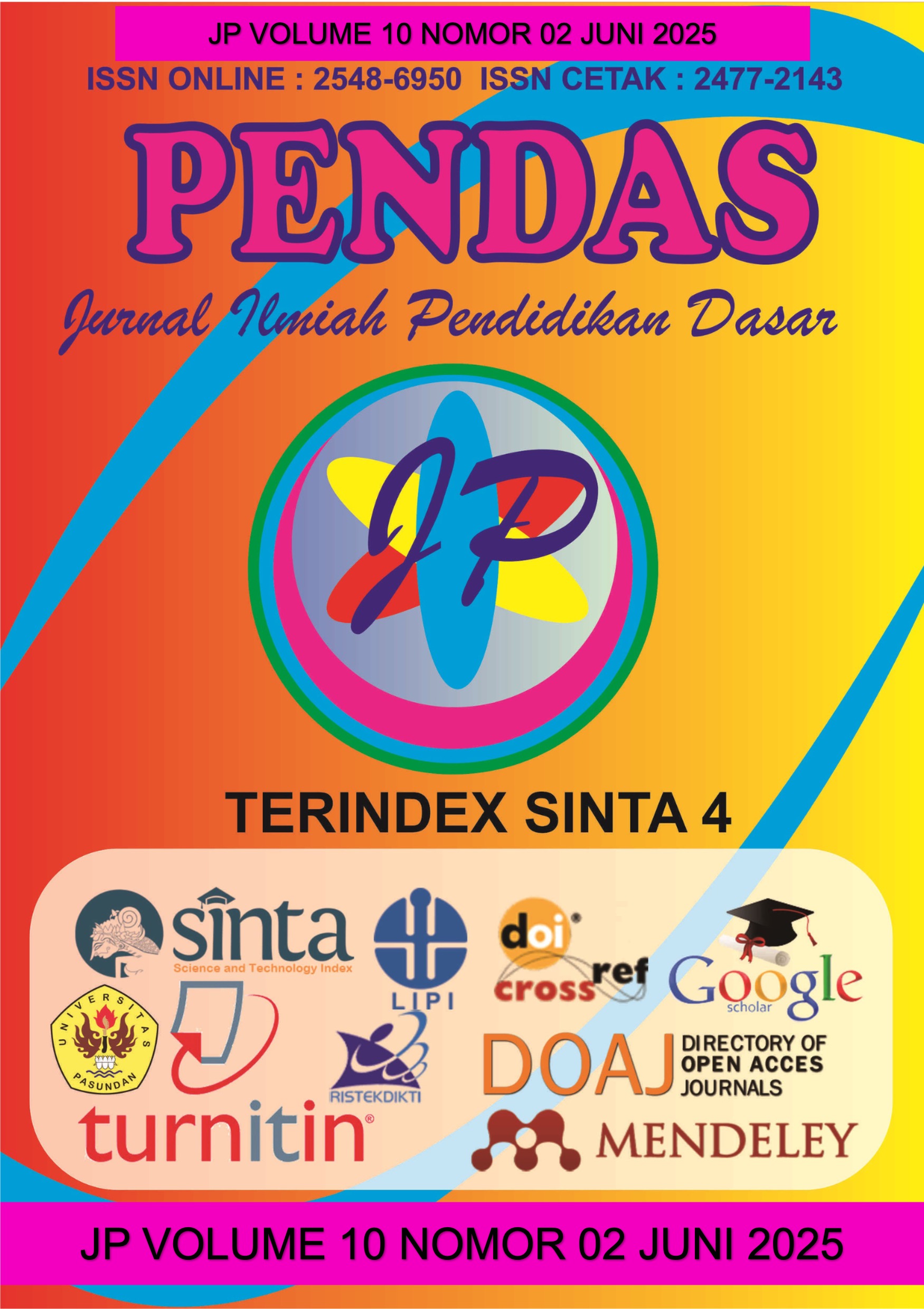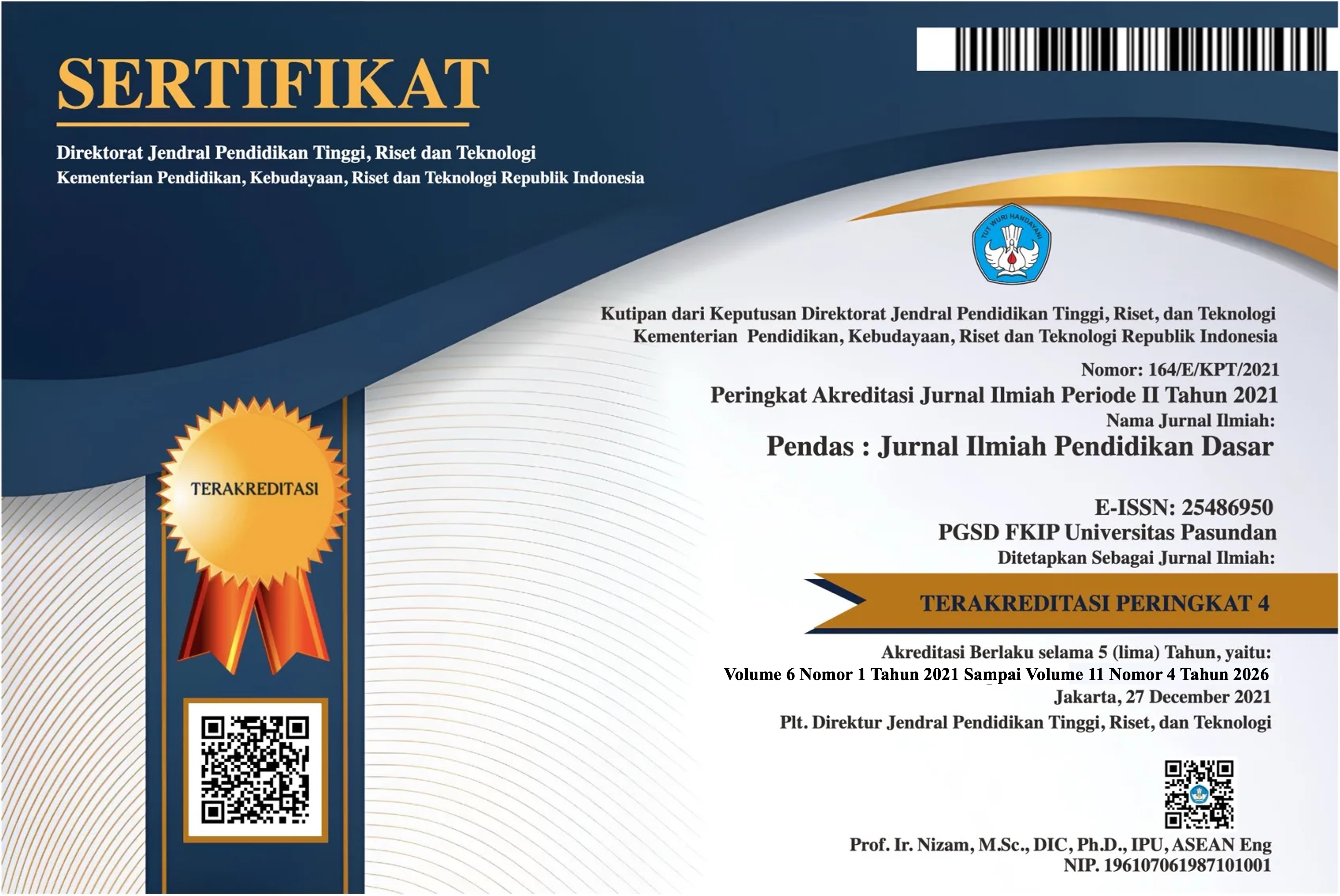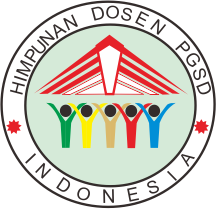PENGARUH PENGGUNAAN MEDIA PEMBELAJARAN ASSEMBLR EDU TERHADAP HASIL BELAJAR SISWA KELAS V UPTD SDN LONGKEK 1
DOI:
https://doi.org/10.23969/jp.v10i02.26054Keywords:
Learning media, Assemblr Edu, learning outcomes, water cycle, science educationAbstract
This study aims to examine the effect of using Augmented Reality-based learning media, specifically Assemblr Edu, on improving the learning outcomes of fifth-grade students on the topic of the water cycle at UPTD SDN Longkek 1. The background of this research stems from students' low comprehension of the water cycle material, primarily due to the dominance of conventional, non-interactive teaching methods. A quasi-experimental method was employed using a One Group Pretest-Posttest design. The sample was selected through non-probability sampling, specifically saturated sampling, involving a total of 22 students whose learning outcomes were assessed before and after the use of Assemblr Edu. The research instrument consisted of multiple-choice tests, and the data were analyzed using normality testing and a paired sample t-test. The results showed an increase in the students’ average scores from 43.5 (pretest) to 73.6 (posttest). The t-test yielded a significance value of 0.000 < 0.05, indicating a statistically significant difference. Thus, it can be concluded that the use of Assemblr Edu media has a positive impact on improving student learning outcomes in the water cycle topic. This study recommends the integration of technology-based learning media as an innovative strategy to support science education in elementary schools.
Keywords: Learning media, Assemblr Edu, learning outcomes, water cycle, science education
Downloads
References
Ali, A., Fenica, S. D., Aini, W., & Hidayat, A. F. (2025). Efektivitas media pembelajaran interaktif dalam meningkatkan minat dan motivasi belajar siswa sekolah dasar. Journal of Information Systems and Education Development (JISEd), 3(1), 1–6.
Arlina, Beti., Putri, R.D., Sari, S.P. 2022. Peningkatan Self-disclosure melalui Bimbingan Kelompok pada Siswa Kelas X di SMA Negeri 1 Rambang Niru. Jurnal Pendidikan dan Konseling. 4(4).
Carera, A., Kurniayati, H., Ansyori, I., & Seruni, M. B. A. (2025). Efektivitas penggunaan Augmented Reality (AR) dalam meningkatkan perubahan energi pada siswa kelas 4 di SDN Karangduak 2. Jurnal Multidisiplin Ilmu Akademik, 2(1), 562–568.
Mullastrini, N. K. E. (2020). New literacy sebagai upaya peningkatan mutu pendidikan sekolah dasar di abad 21. Jurnal Ilmu Pendidikan Dasar, 4(1), 115–125.
Primadona, I., Zakir, S., Efriyanti, L., & Jasmeniti. (2024). Perancangan media pembelajaran berbasis Augmented Reality (AR) menggunakan Assemblr Edu pada mata pelajaran biologi di MAN 4 Agam. Education Achievement: Journal of Science and Research, 5(3), 907–923.
Sari, W. D., & Ika. (2023). Integrasi teknologi informasi dan komunikasi dalam pembelajaran. Jurnal Madani Institute: Politik, Hukum, Pendidikan, Sosial dan Budaya, 5(1), 52–60.
Sugiyono. (2013). Metode Penelitian Kuantitatif, Kualitatif, Dan R&D. Bandung: Alfabeta, CV.
Sugrah, N. (2019). Implementasi teori belajar konstruktivisme dalam pembelajaran sains. Humanika: Kajian Ilmiah Mata Kuliah Umum, 19(2), 121–138.
Taroreh, L. H. J. (2024). Efektivitas media pembelajaran interaktif berbasis teknologi dalam meningkatkan pemahaman konsep IPA. PEDASUD: Jurnal Ilmu Pendidikan Guru Sekolah Dasar dan Usia Dini, 1(1), 26–31.
Zaid, M., Razak, F., & Alam, A. F. (2022). Keefektifan media pembelajaran Augmented Reality berbasis STEAM dalam meningkatkan kualitas pembelajaran IPA di sekolah dasar. Jurnal Pembelajaran IPA Terpadu: PELITA, 2(2), 59–68.
Downloads
Published
Issue
Section
License
Copyright (c) 2025 Pendas : Jurnal Ilmiah Pendidikan Dasar

This work is licensed under a Creative Commons Attribution 4.0 International License.



















